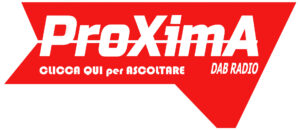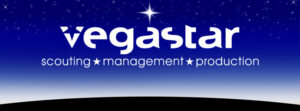Content
Assume, for example, a passenger rushes up to the ticket counter to purchase a ticket for a flight that is leaving in 25 minutes. The airline needs to consider the relevant costs to make a decision about the ticket price. Almost all of the costs related to adding the extra passenger have already been incurred, including the plane fuel, airport gate fee, and the salary and benefits for the entire plane’s crew. Because these costs have already been incurred, they are “sunk costs” or irrelevant costs. Management uses relevant costs in decision-making, such as whether to close a business unit, whether to make or buy parts or labor, and whether to accept a customer’s last-minute or special orders. Actual cost is the actual expenditure made to acquire an asset, which includes the supplier-invoiced expense, plus the costs to deliver, set up, and test the asset.
Fixed costs are associated with the basic operating andoverhead costsof a business. They are not costs incurred directly by the production process, such as parts normal balance needed for assembly, but they nonetheless factor into total production costs. The defining characteristic of sunk costs is that they cannot be recovered.
How To Determine Whether Or Not To Accept A Special Order In Accounting
Costs may stay the same or may change proportionately in response to a change in activity. Fixed costs are allocated under the absorption basis of cost accounting. Under this arrangement, fixed manufacturing overhead costs are proportionally assigned to the units produced in a reporting period, and so are recorded as assets.
It’s easy to imagine a scenario where fixed costs are not sunk; for example, equipment might be re-sold or returned at thepurchase price. For example, someone might drive to the store to buy a television, only to decide upon arrival to not make the purchase. The gasoline used in the drive is, however, a sunk normal balance cost—the customer cannot demand that the gas station or the electronics store compensate them for the mileage. Any fixed costs on the income statement are also accounted for on the balance sheet and cash flow statement. Fixed costs on the balance sheet may be either short-term or long-term liabilities.
The relevant range refers to a specific activity level that is bounded by a minimum and maximum amount. Within the designated boundaries, certain revenue or cost levels can be expected to occur. Outside of that relevant range, revenues and expenses will likely differ from the expected amount. This classification of direct labor as fixed or variable depends on the type of industry.
Fixed costs, such as a factory lease or manager salaries, are irrelevant because the firm has already paid for those costs with prior sales. Should a company experience a downturn in activity, it can decide to cut its fixed costs to accommodate a lower relevant range.
Variable Costs & Fixed Costs
Despite its limitations, the CVP analysis is a useful tool in decision-making when used correctly. The limitations simplify the process of analyzing the effect of changes in activity level to costs and ultimately to profit. Cost and revenue relationships are linear within a relevant ledger account range of activity and over a specified period of time. Variable costing – A costing approach in which only variable manufacturing costs are product costs, and fixed manufacturing costs are period costs . Once you incur a fixed cost, it does not change within a given range.
To analyze cost behavior when costs are mixed, the cost must be split into its fixed and variable components. The relevant range here refers to the range of activity in which the relationship between the total cost and the level of activity is maintained.
- As such fixed costs can be allocated throughout the income statement.
- However, he can consider this fixed cost on a per-unit basis, as shown in Figure 2.15.
- Both fixed and variable costs can take on this stair-step behavior.
- Variable costs include direct labor, direct materials, and variable overhead.
- Revisiting Tony’s T-Shirts, Figure 2.16 shows how the variable cost of ink behaves as the level of activity changes.
- Variable costing – A costing approach in which only variable manufacturing costs are product costs, and fixed manufacturing costs are period costs .
The graph below shows that within a relevant range per unit cost gradually declines as the number of units produced increases. The per unit amount of fixed cost is calculated by dividing the total amount by the actual number of units produced. Cost structure management is an important part of business analysis that looks at the effects of fixed and variable costs on a business relevant range accounting definition overall. Depreciation is a fixed cost, because it recurs in the same amount per period throughout the useful life of an asset. Depreciation cannot be considered a variable cost, since it does not vary with activity volume. The relevant range, the range of activity for which cost estimates are more likely to be accurate, is from 150 units to 450 units of production .
Level Of Activity Method
Total variable cost changes directly with the volume of activity. On the other hand, total fixed costs remain constant regardless of the level of activity. As Figure 2.16 shows, the variable cost per unit (per T-shirt) does not change as the number of T-shirts produced increases or decreases. However, the variable costs change in total as the number of units produced increases or decreases.
Like direct materials, direct labor is typically treated as a variable cost because it varies with the level of activity. However, there are some companies that pay a flat weekly or monthly salary for production workers, and for these employees, their compensation could be classified as a fixed cost. For example, many auto mechanics are now paid a flat weekly or monthly salary. Companies have a wide range of different costs associated with their business.
Without defining the such range, it is impossible to effectively complete the budgeting process. When a company sells more than one type of product, the product mix will remain constant. Overhead volume variance – The difference between normal capacity hours and standard hours allowed times the fixed overhead rate. Labor price variance – The difference between the actual hours times the actual rate and the actual hours times the standard rate for labor. Standard cost accounting system – A double-entry system of accounting in which standard costs are used in making entries and variances are recognized in the accounts. Job order cost system – A cost accounting system in which costs are assigned to each job or batch. Cost accounting – An area of accounting that involves measuring, recording, and reporting product costs.
Looking at this analysis, it is clear that, if there is an activity that you think that you cannot afford, it can become less expensive if you are creative in your cost-sharing techniques. Tony’s cost of operations and the associated relevant ranges are shown in Table 2.5. However, many companies often examine the relationship between multiple independent variables and a single dependent variable. Xander LLC rents warehouse space at an annual rental fee of $15,000, which allows it to keep simultaneously 20,000 units in stock. There is a possibility of renting additional warehouse space allowing it to keep 10,000 units for $5,000 per year.
4 The Relevant Range And Nonlinear Costs
Predetermined overhead rate – A rate based on the relationship between estimated annual overhead costs and expected annual operating activity, expressed in terms of a common activity base. While in the example Carolina Yachts is dependent upon direct labor, the production process for companies in many industries is moving from human labor to a more automated production process. For these companies, direct labor in these industries is becoming less significant.
Another way management may want to consider their costs is as average costs. Under this approach, managers can calculate both average fixed and average variable costs. Tony operates a screen-printing company, specializing in custom T-shirts. Regardless of whether he produces and sells any T-shirts, he is obligated under his lease to pay $1,000 per month. However, he can consider this fixed cost on a per-unit basis, as shown in Figure 2.15. If the production level increases, the variable cost’s proportion will increase at the same rate.
Why Is Direct Labor A Variable Cost?
An irrelevant cost is a cost that will not change as the result of a management decision. However, the same cost may be relevant to a different management decision. Consequently, it is important to formally define and document those costs that should be excluded from consideration when reaching a decision.
This line shows the fixed cost, which will not be changed after changing output. Operating leverage is a cost-accounting formula that measures the degree to which a firm can increase operating income by increasing revenue. Incremental analysis is a decision-making technique used in business to determine the true cost difference between alternatives. Relevant costs are only the costs that will be affected by the specific management decision being considered. Mr. Spoke owns the Rider Bicycle Company, which produces children’s bikes.
These three costs are referred to as product costs and are used for the cost of goods sold and for inventory valuation. DEFINITION of ‘High-Low Method’ In cost accounting, a way of attempting to separate out fixed and variable costs given a limited amount of data. The high-low method involves taking the highest level of activity and the lowest level of activity and comparing the total costs at each level.
We will need to add to our space, thus increasing our fixed expenses. These are simplifying, largely linearizing assumptions, which are often implicitly assumed in elementary discussions of costs and profits. In more advanced treatments and practice, costs and revenue are nonlinear and the analysis is more complicated, but the intuition afforded by linear CVP remains basic and useful. Normal capacity – The average activity output that a company should experience over the long run. Ideal standards – Standards based on the optimum level of performance under perfect operating conditions. Normal standards – Standards based on an efficient level of performance that are attainable under expected operating conditions. Standard costs – Predetermined unit costs which companies use as measures of performance.
Methods Of Segregating Mixed Cost
It is important to take note that volume is the only factor affecting total variable costs. In analyzing the costs, Pat also needs to consider the total costs and average costs. The analysis will calculate the average fixed costs, the total fixed costs, the average variable costs, and the total variable costs. In managerial accounting, relevant range refers to the production volume bounded by the minimum and maximum amount when fixed costs remain unchanged. If production volume drops below the minimum amount or surges above the maximum amount, the amount of fixed cost undergoes significant changes as shown in the graph below.
By solving this equation mathematically, we can calculate the variable cost at different levels of production. Another example of mixed cost is a delivery cost, which has a fixed component of depreciation cost of trucks and a variable component of fuel expense. Fixed costs are those who are not expected to change in total within the current budget year, irrespective of variations in the volume of activity. Fixed cost is the cost that accrues about the passage of time and which, within certain limits, tends to be unaffected by fluctuations in the level of activity.
Depreciation is one common fixed cost that is recorded as an indirect expense. Companies create a depreciation expense schedule for asset investments with values falling over time.
For example, Rider Bicycle’s utility costs would be a mixed cost as part of the cost depends on the amount of electricity used . The business also has a constant cost for delivery of the hydro regardless of usage . When examining a company’s cost structure, mixed costs must be separated into their variable and fixed components. As you can see, even though the total fixed costs remain unchanged at $150,000, the fixed cost per unit will change depending on how many bicycles are produced.
Underapplied overhead – A situation in which overhead assigned to work in process is less than the overhead incurred. Overapplied overhead – A situation in which overhead assigned to work in process is greater than the overhead incurred. Process cost system – A system of accounting used when a large quantity of similar products are manufactured. Cost accounting system – Manufacturing cost accounts that are fully integrated into the general ledger of a company.










